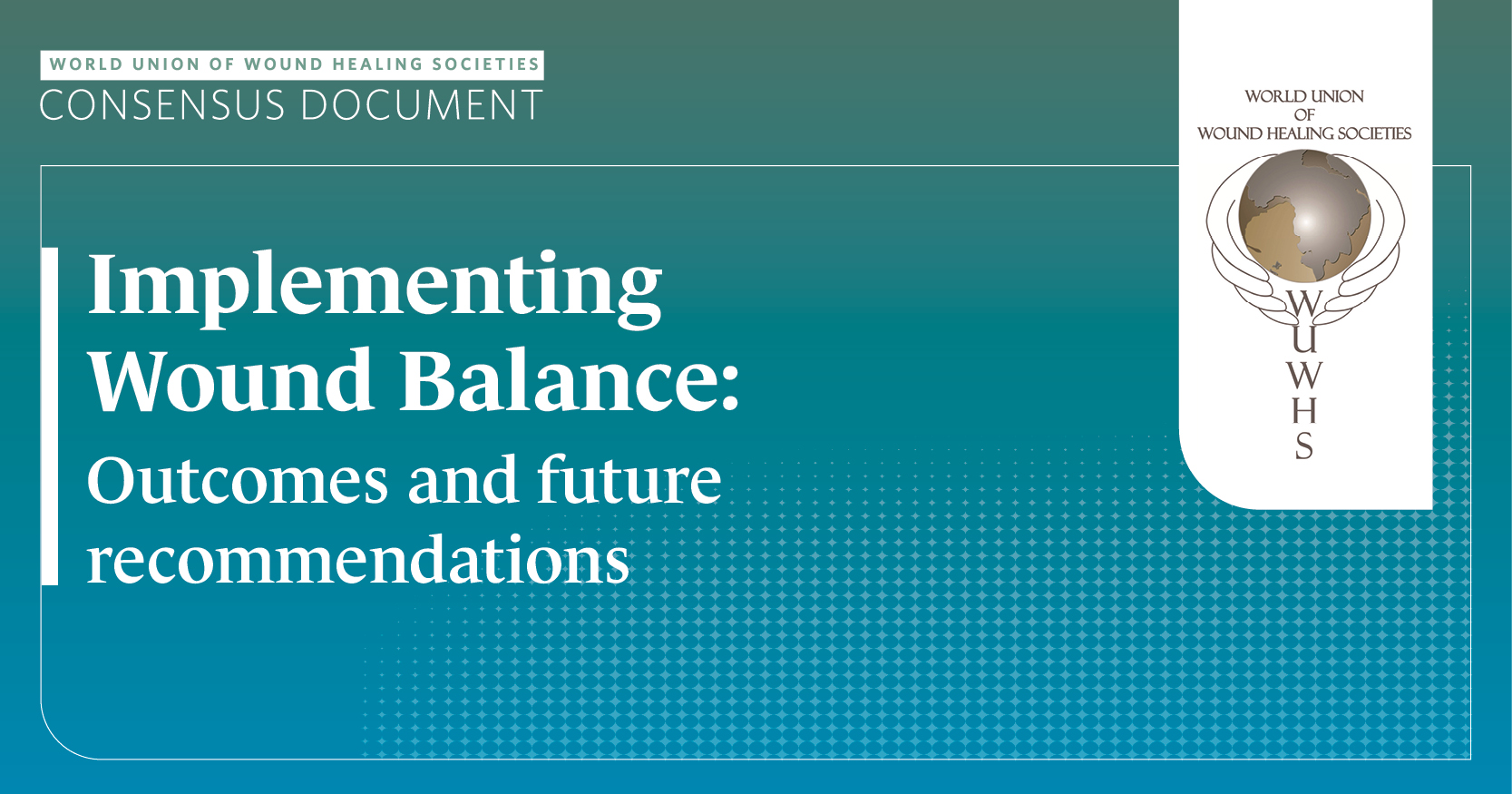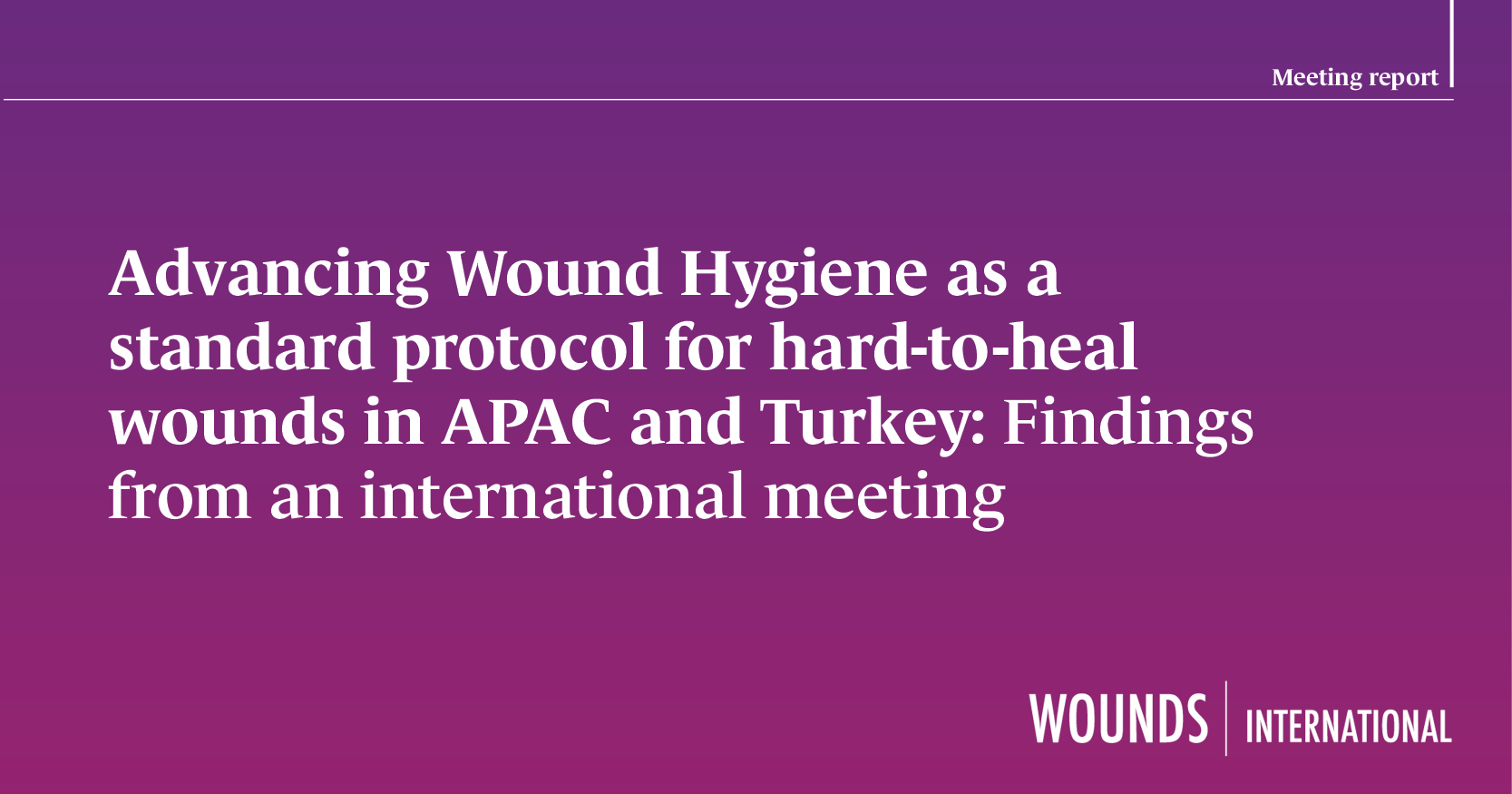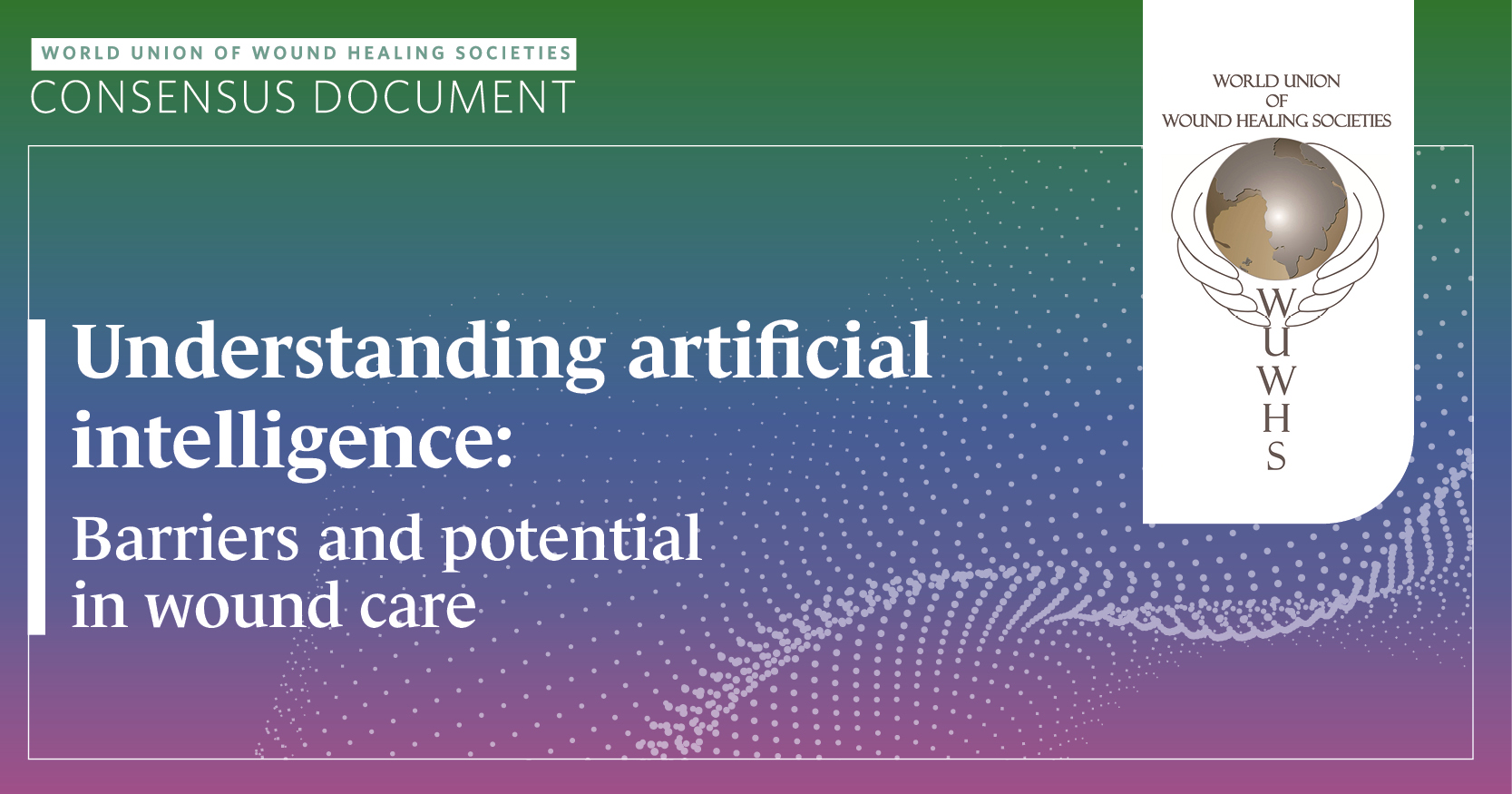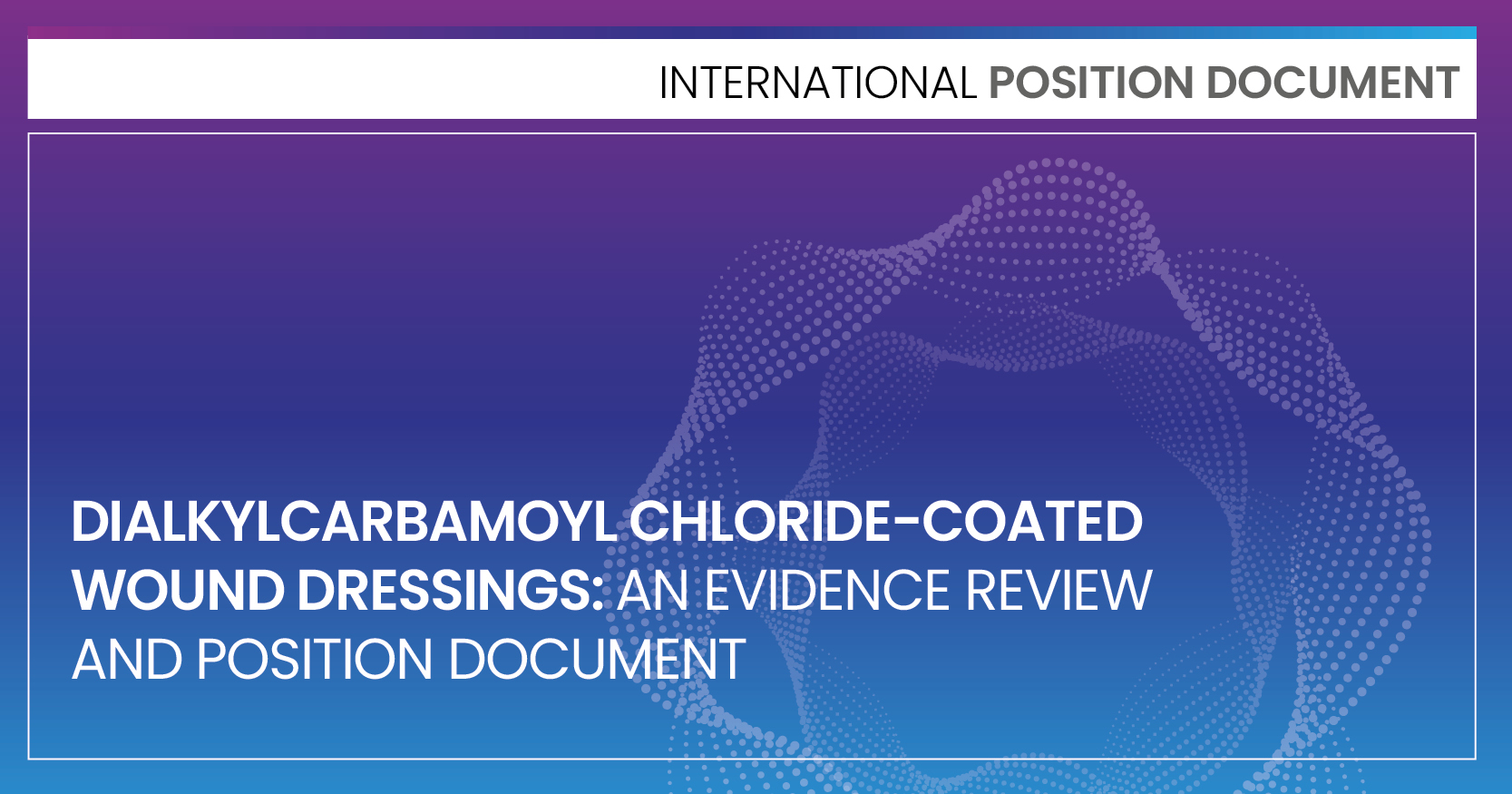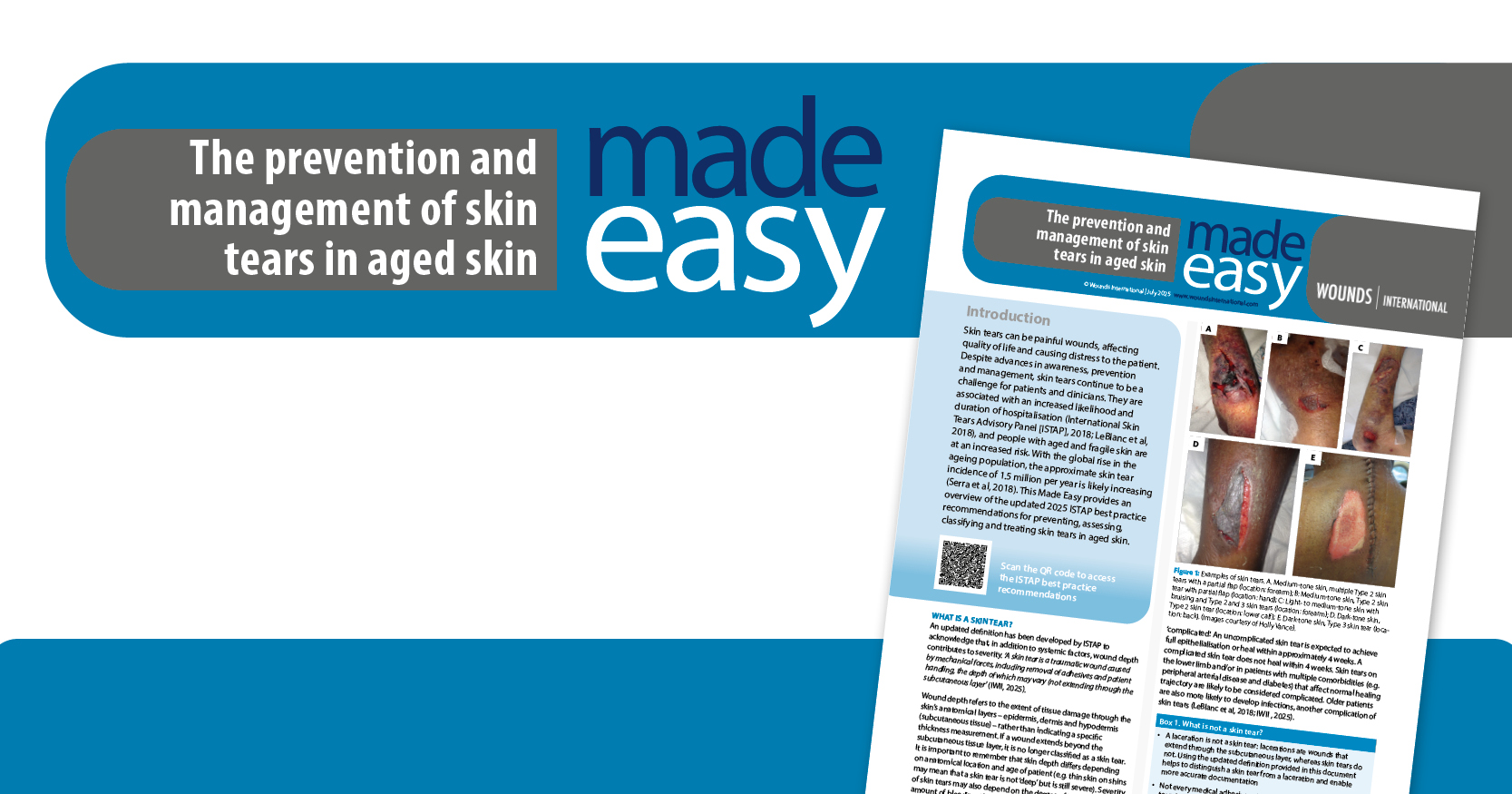ReferencesAhmajärvi K, Isoherranen K, Venermo M (2022) Cohort study of diagnostic delay in the clinical pathway of patients with chronic wounds in the primary care setting. BMJ Open 12(11): e062673
Alnaser F (2020) Effective communication skills and patient’s health. CPQ Neurol Psychol 3(4): 1-11
Anghel EL, DeFazio MV, Barker JC et al (2016) Current Concepts in Debridement: Science and Strategies. Plast Reconstr Surg 138(3 Suppl): 82S-93S
Armstrong DG, Jude EB (2002) The role of matrix metalloproteinases in wound healing. J American Pod Med Assn 92(1): 12-8
Atkin L, Bućko Z, Conde Montero E et al (2019) Implementing TIMERS: the race against hard-to-heal wounds. J Wound Care 23(Sup3a): S1-50
Atkin L, Barrett S, Chadwick P et al (2020) Evaluation of a superabsorbent wound dressing, patient and clinician perspective: a case series. J Wound Care 29(3): 174-82
Avishai E, Yeghiazaryan K, Golubnitschaja O (2017) Impaired wound healing: facts and hypotheses for multi-professional considerations in predictive, preventive and personalised medicine. EPMA J 8(1): 23-33
Ayavoo T, Murugesan K and Gnanasekaran A (2021) Roles and mechanisms of stem cell in wound healing. Stem Cell Investig 8: 4
Ball C, Taylor C, Salgado B et al (2025) In vitro evaluation of the capability of a silicone superabsorbent polymer (SAP) dressing to modulate pro-inflammatory cytokines. Wounds Int 16(2): 12-23
Bhattad PB, Pacifico L (2022) Empowering Patients: Promoting Patient Education and Health Literacy. Cureus 14(7): e27336
Blome C, Baade K, Debus ES et al (2014) The “Wound-QoL”: a short questionnaire measuring quality of life in patients with chronic wounds based on three established disease-specific instruments. Wound Repair Regen 22(4): 504-14
Blome C, Candas E, Erfert-Berge C et al (2024) Implementing the Wound Balance concept into routine practice worldwide. Wounds Int 15(2): 44-50
Boniol M, Kunjumen T, Nair TS et al (2022) The global health workforce stock and distribution in 2020 and 2030: a threat to equity and ‘universal’ health coverage? BMJ Glob Health 7(6): e009316
Buchstein N, Hoffmann D, Smola H et al (2009) Alternative proteolytic processing of hepatocyte growth factor during wound repair. Am J Pathol 174(6): 2116-28
Candas E, Forster J, Schäfer J et al (2021) HydroClean® Made Easy. Wounds International
Carter MJ, DaVanzo J, Haught R et al (2023) Chronic wound prevalence and the associated cost of treatment in Medicare beneficiaries: Changes between 2014 and 2019. J Med Econ 26(1): 894-901
Choo J, Nixon J, Nelson A (2019) Autolytic debridement for pressure ulcers. Cochrane Database Syst Rev 2019(6): CD011331
Cullen B, Gefen A (2023) The biological and physiological impact of the performance of wound dressings. Int Wound J 20(4): 1292-303
Dissemond J, Protz K, Erfurt-Berge C et al (2022a) Wundbehandlung ohne kurative Zielsetzung: Ein Positionspapier der Initiative Chronische Wunden (ICW) e. V [Wound treatment without curative intention: position paper of the Initiative Chronische Wunden (ICW) e. V.]. Dermatologie (Heidelb) 73(7): 550-5
Dissemond J, Malone M, Ryan H et al (2022b) Implementation of the M.O.I.S.T. concept for the local treatment of chronic wounds into clinical practice. Wounds International 13(4): 34–43
Eming SA, Koch M, Krieger A, et al (2010) Differential proteomic analysis distinguishes tissue repair biomarker signatures in wound exudates obtained from normal healing and chronic wounds. J Proteome Res 9(9): 4758-66
Erfurt-Berge C, Michler M, Renner R (2021) Versorgungszustand von Patienten vor Zuweisung an ein universitäres Wundzentrum [Standard of patient-centred care before admission to a university wound centre]. Hautarzt 72(6): 517-24
Eriksson E, Liu PY, Schultz GS et al (2022) Chronic wounds: Treatment consensus. Wound Repair Regen 30(2): 156-71
Fletcher J, Edmonds M, Madden J et al (2024) Demystifying infection in the diabetic foot.
Wounds UK
Gao M, Guo H, Dong X et al (2024) Regulation of inflammation during wound healing: the function of mesenchymal stem cells and strategies for therapeutic enhancement. Front Pharmacol 15: 1345779
Gefen A, Alves P, Beeckman D et al (2024) How Should Clinical Wound Care and Management Translate to Effective Engineering Standard Testing Requirements from Foam Dressings? Mapping the Existing Gaps and Needs. Adv Wound Care (New Rochelle) 13(1): 34-52
Giguère A, Zomahoun HTV, Carmichael PH et al (2020) Printed educational materials: effects on professional practice and healthcare outcomes. Cochrane Database Syst Rev 8(8): CD004398
Gould L, Abadir P, Brem H et al (2015) Chronic wound repair and healing in older adults: current status and future research. J Am Geriatr Soc 63(3): 427-38
Guest JF, Fuller GW, Vowden P (2020) Cohort study evaluating the burden of wounds to the UK’s National Health Service in 2017/2018: update from 2012/2013. BMJ Open 10: e045253
Herrick S, Ashcroft G, Ireland G et al (1997) Up-regulation of elastase in acute wounds of healthy aged humans and chronic venous leg ulcers are associated with matrix degradation. Lab Invest
77(3): 281-8
Holm A, Karlsson V, Dreyer P (2021) Nurses’ experiences of serving as a communication guide and supporting the implementation of a communication intervention in the intensive care unit. Int J Qualitative Stud Health Well-being 16(1): 1971598
House of Lords Hansard (2021) Written Statements and Written Answers Session 2019-21, No. 175 21 January 2021. Available at: https://hansard.parliament.uk/commons/2021-01-21 (accessed 05.02.2025)
Janke TM, Kozon V, Valiukeviciene S et al (2024) Assessing health-related quality of life using the Wound-QoL-17 and the Wound-QoL-14-Results of the cross-sectional European HAQOL study using item response theory. Int Wound J 21(8): e70009
Kandhwal M, Behl T, Singh S et al (2022) Role of matrix metalloproteinase in wound healing. Am J Transl Res 14(7): 4391-405
Kapp S, Santamaria N (2017) The financial and quality-of-life cost to patients living with a chronic wound in the community. Int Wound J 14(6): 1108-19
Khalid KA, Nawi AFM, Zulkifli N et al (2022) Aging and Wound Healing of the Skin: A Review of Clinical and Pathophysiological Hallmarks. Life (Basel) 12(12): 2142
King A, Hoppe RB (2013) “Best practice” for patient-centered communication: a narrative review. J Grad Med Educ 5(3): 385-93
Krzyszczyk P, Schloss R, Palmer A, Berthiaume F (2018) The Role of Macrophages in Acute and Chronic Wound Healing and Interventions to Promote Pro-wound Healing Phenotypes. Front Physiol 9: 419
Langemo D, Faan RN, Campbell K et al (2021) Applying Frailty Syndrome to the Skin: A Review and Guide for Prevention and Management. Adv Skin Wound Care 34(8): 444-7
Lauer G, Sollberg S, Cole M et al (2000) Expression and proteolysis of vascular endothelial growth factor is increased in chronic wounds. J Invest Dermatol 115(1): 12-8
LeBlanc K, Woo K (2022) A pragmatic randomised controlled clinical study to evaluate the use of silicone dressings for the treatment of skin tears. Int Wound J 19(1): 125-34
Lindholm C, Searle R (2016) Wound management for the 21st century: combining effectiveness and efficiency. Int Wound J 2(Suppl 2): 5-15
Lindley LE, Stojadinovic O, Pastar I (2016) Biology and Biomarkers for Wound Healing. Plast Reconstr Surg 138(3 Suppl): 18S-28S
Lumbers M (2019) TIMERS: undertaking wound assessment in the community. Br J Community Nurs 24(Sup12): S22-S25
Mamun AA, Shao C, Geng P (2024) Recent advances in molecular mechanisms of skin wound healing and its treatments. Front Immunol 15: 1395479
Mayer DO, Tettelbach WH, Ciprandi G et al (2024) Best practice for wound debridement. J Wound Care 33(Sup6b): S1-32
Mikosiński J, Kalogeropoulos K, Bundgaard L (2022) Longitudinal Evaluation of Biomarkers in Wound Fluids from Venous Leg Ulcers and Split-thickness Skin Graft Donor Site Wounds Treated with a Protease-modulating Wound Dressing. Acta Derm Venereol 102: adv00834
National Library of Medicine (2022) Chronic wounds: Learn More – What are the treatment options for chronic wounds? Available at: https://www.ncbi.nlm.nih.gov/books/NBK326436/ (accessed 257.01.2025)
National Library of Medicine (2023a) Wound physiology. Available at: https://www.ncbi.nlm.nih.gov/books/NBK518964/ (accessed 10.01.2025)
National Library of Medicine (2023b) Wound dehiscence. Available at: https://www.ncbi.nlm.nih.gov/books/NBK551712/#:~:text=The%20causes%20of%20dehiscence%20are,or%20drainage%20at%20the%20site. (accessed 04.02.2025)
National Library of Medicine (2023c) Wound debridement. Available at: https://www.ncbi.nlm.nih.gov/books/NBK507882/#:~:text=Debridement%20for%20most%20wounds%20is,stimulating%20activity%20of%20growt (accessed 04.02.2025)
National Library of Medicine (2025) Wound Assessment. Available at: https://pubmed.ncbi.nlm.nih.gov/29489199/ (accessed 27.01.2025)
National Institute for Health and Care Excellence (2024) Leg ulcer – venous. Available at: https://cks.nice.org.uk/topics/leg-ulcer-venous/#:~:text=A%20venous%20leg%20ulcer%20occurs,ankle%20to%20mid%2Dcalf) (accessed 27.01.2025)
Nwomeh BC, Yager DR, Cohen IK (1998) Physiology of the chronic wound. Clin Plastic Surgery 25(3): 341-56
Olsson M, Järbrink K, Divakar U et al (2019) The humanistic and economic burden of chronic wounds: a systematic review. Wound Repair Regen 27(1): 114-125
Ousey K, Rogers AA, Rippon MG (2016) HydroClean® plus: a new perspective to wound cleansing and debridement. Wounds UK 12(1): 78-87
Pađen L, Gschwind G, Vettorazzi R (2024) Facilitators and barriers for nurses when educating people with chronic wounds – A qualitative interview study. J Tissue Viability 33(2): 174-78
Patel S, Maheshwari A, Chandra A (2016) Biomarkers for wound healing and their evaluation. J Wound Care 25(1): 46-55
Probst A (2019) Zetuvit Plus Silicone Border Made Easy. Wounds International
Queen D, Harding K (2023) What’s the true costs of wounds faced by different healthcare systems around the world? Int Wound J 20(10): 393538
Raziyeva K, Kim Y, Zharkinbekov Z, Kassymbek K (2021) Immunology of Acute and Chronic Wound Healing. Biomolecules 11(5): 700
Sawaya AP, Stone RC, Brooks SR (2020) Deregulated immune cell recruitment orchestrated by FOXM1 impairs human diabetic wound healing. Nat Commun 11(1): 4678
Schilrreff P, Alexiev U (2022) Chronic Inflammation in Non-Healing Skin Wounds and Promising Natural Bioactive Compounds Treatment. Int J Mol Sci 23(9): 4928
Sen CK (2023) Human Wound and Its Burden: Updated 2022 Compendium of Estimates. Adv Wound Care 12: 657-70
Sharkiya SH (2023) Quality communication can improve patient-centred health outcomes among older patients: a rapid review. BMC Health Serv Res 23(1): 886
Shi C, Wang C, Liu H et al (2020) Selection of Appropriate Wound Dressing for Various Wounds. Front Bioeng Biotechnol 8: 182
Sibbald RG, Elliott JA, Persaud-Jaimangal R (2021) Wound Bed Preparation. Adv Skin Wound Care 34(4): 183-95
Stacey MC, Phillips SA, Farrokhyar F (2019) Evaluation of wound fluid biomarkers to determine healing in adults with venous leg ulcers: a prospective study. Wound Repair Regen 27(5): 509-18
Swoboda L. Multi-layer silicone SAP dressing for wound prophylaxis. Presented at Symposium on Advanced Wound Care (poster EBP-018)
Las Vegas, Nevada, 2-5 October 2024
Tickle J (2013) Living day-to-day with a heavily exuding wound: Recommendations for practice. Wounds UK 8(1):77-78
Trengove NJ, Bielefeldt-Ohmann H, Stacey MC (2000) Mitogenic activity and cytokine levels in non-healing and healing chronic leg ulcers. Wound Repair Regen 8(1): 13-25
Trouth S (2024) Introducing Wound Balance: placing the patient at the heart of wound healing. Wounds UK 20(1): 32-7
Ulrich D, Lichtenegger F, Unglaub F et al (2005) Effect of chronic wound exudates and MMP-2/9 inhibitor on angiogenesis in vitro. Reconstr Surg 116(2): 539-45
von Stülpnagel CC, da Silva N, Augustin M et al (2021) Assessing the quality of life of people with chronic wounds by using the cross-culturally valid and revised Wound-QoL questionnaire. Wound Repair Regen 29(3): 452-59
Veličković VM, Chadwick P, Rippon MG (2020) Cost-effectiveness of superabsorbent wound dressing versus standard of care in patients with moderate-to-highly exuding leg ulcers. J Wound Care 29(4): 235-46
Veličković VM, Prieto PA (2022) Superabsorbent wound dressings versus foams dressings for the management of moderate-to-highly exuding venous leg ulcers in French settings: An early stage model-based economic evaluation. J Tissue Viability 31(3): 523-30
Veličković VM, Lembelembe JP, Cegri F et al (2023) Superabsorbent Wound Dressing for Management of Patients With Moderate-to-Highly Exuding Chronic Leg Ulcers: An Early Stage Model-Based Benefit-Harm Assessment. Int J Low Extrem Wounds 22(2): 345-52
Veličković V M, Macmillan T, Lones E (2024) Systematic review and quality assessment of clinical and economic evidence for superabsorbent wound dressings in a population with chronic ulcers. Int Wound J 21(3): e14750
Walker M (2022) Human skin through the ages. Int J Pharm 622: 121850
Wang D, Liu C, Zhang X (2020) Do Physicians’ Attitudes towards Patient-Centered Communication Promote Physicians’ Intention and Behavior of Involving Patients in Medical Decisions? Int J Environ Res Public Health 17(17): 6393
World Health Organization (2025) Health workforce. Available at: https://www.who.int/health-topics/health-workforce#tab=tab_1 (accessed 25.1.2025)
Wounds International (2019) Wound exudate. Effective assessment and management. Wounds International, London. Available to download from www.woundsinternational.com
Wounds International (2023) Wound Balance: achieving wound healing with confidence. Wounds International, London. Available to download from www.woundsinternational.com
Wounds International (2024) Surgical wound dehiscence (SWD): International consensus statement on assessment, diagnosis and management. Wounds International, London. Available to download from www.woundsinternational.com
Zhu X, Olsson MM, Bajpai R (2022) Health-related quality of life and chronic wound characteristics among patients with chronic wounds treated in primary care: A cross-sectional study in Singapore. Int Wound J 19(5): 1121-32

